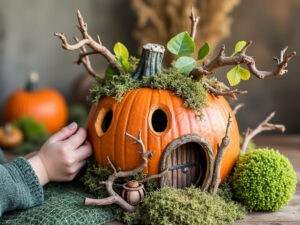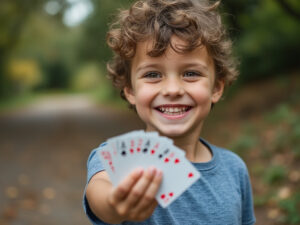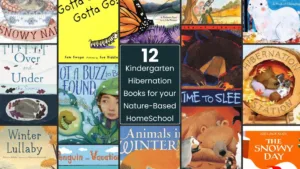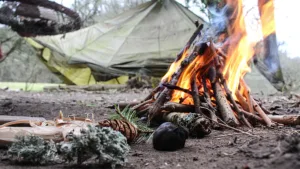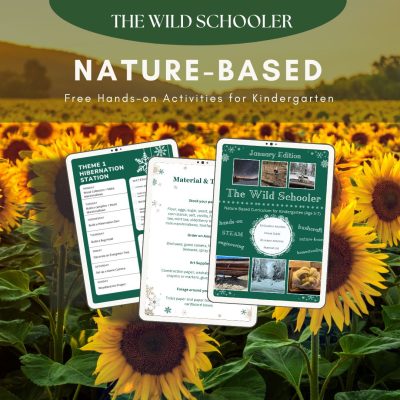What I love most about homeschooling is the extra time I get to bond with my children, creating memories that I hope they’ll cherish forever. If you know me, you know I love playing cards—especially Poker. But my love for the game isn’t because I won big at a casino in my 20s; it started much earlier.
Growing up in the 90s, our family beach vacations were filled with board games and cards—no smartphones in sight. My dad and his friends would play poker with seven-year-old me, using whatever we had for “money”—pretzel sticks, popcorn, peanuts. Those hours spent together, laughing and playing, are some of my favorite memories.
Now, my own seven-year-old has caught the card-playing bug, and every night this week we sat down to a game of rummy. She begs me to play, and I’m thrilled that this counts as homeschool hours. As we add up the points, she’s learning to count by 5s, 10s, and 15s. It’s a reminder of how much we learn through life, not just school—skills like math, strategy, and social skills all wrapped up in a simple game.
Card games aren’t just about winning or learning specific skills; they’re about quality time and building connections. I hope you find a game in this list that you and your kids love, one that teaches them something new while creating memories that last a lifetime.
1. Uno
Skills Taught: Number recognition, color matching, strategic thinking, and turn-taking.
- Type of Cards: Specialized Uno Deck
- Number of Players: 2-10 players
- Grade Level: K-5
Uno is a staple in family game collections, and for a good reason. This colorful game of numbers and symbols teaches young kids how to match colors and numbers, while also enhancing their strategic thinking as they decide which card to play. Uno also helps kids practice patience and good sportsmanship since it’s all about waiting for the right moment to play that game-changing Wild card!
How to Play: Each player starts with seven cards, and the goal is to be the first to get rid of all your cards by matching the card in the discard pile by number or color. Special cards, like Draw Two, Skip, and Reverse, add twists that require quick thinking.
Example: One child has a handful of blue cards but only one yellow card left—a Wild Draw Four. As the game progresses, the discard pile shows a red card. The young player, after carefully considering their options, plays a blue Reverse card, changing the direction of play.
The next player doesn’t have any matching cards, so they draw from the deck, allowing the first child another turn. They lay down their Wild Draw Four, turning the pile to yellow—the color they desperately needed. Finally, with just one card left, the young player shouts, “Uno!” on their turn and places their last yellow card on the pile, becoming the winner of the game.
2. Go Fish
Skills Taught: Number recognition, matching, patience, and communication.
- Type of Cards: Standard Playing Cards or Go Fish Deck
- Number of Players: 2-6 players
- Grade Level: Pre-K – 2
Go Fish is a simple and fun game that’s perfect for young minds. It’s a quick game that teaches basic math lessons like counting and number recognition, and it encourages kids to communicate politely while asking for cards. The element of collecting pairs helps younger students practice their memory and matching skills in an enjoyable and engaging way.
How to Play: Players ask each other for specific cards to complete sets. If the asked player has the card, they must hand it over; if not, the asking player “goes fish” by drawing a card from the full deck of cards in the center. The game continues until all sets are completed.
The game moves quickly as pairs are made, and soon one player is down to their last set. They confidently ask for a card, receive it, and proudly display their final pair, becoming the winner. For young minds, Go Fish is more than just a game—it’s a valuable opportunity to practice communication, patience, and matching skills, all wrapped up in a friendly, easy-to-understand format that’s ideal for younger students.
3. Memory/Concentration
Skills Taught: Memory, matching, concentration, and taking turns.
- Type of Cards: Standard Playing Cards or Memory Card Deck
- Number of Players: 2-6 players
- Grade Level: Pre-K – 2
Memory, also known as Concentration, is a fantastic game that challenges young players to use their recall skills. It involves a set of cards laid face down, which players must flip over to find matching pairs. Memory is a great way to improve focus, attention to detail, and cognitive skills, making it a popular choice for both home and classroom environments. It’s particularly well-suited for a small group of kids, encouraging them to take turns and celebrate each other’s successes.
How to Play: Lay cards face down in rows. Players take turns flipping two cards over, trying to find a match. If they match, the player keeps the cards and gets another turn; if not, the cards are flipped back over, and the next player goes.
By the end of the game, the table is cleared of cards, and one player triumphantly holds the most pairs, becoming the winner. Memory is a powerful tool for developing cognitive skills in young children, offering a playful yet effective approach to enhancing concentration, recall, and matching skills.
4. Crazy Eights
Skills Taught: Number recognition, sequencing, strategy, and adaptability.
- Type of Cards: Standard Playing Cards
- Number of Players: 2-5 players
- Grade Level: K-4
Crazy Eights is a versatile and strategic game that’s perfect for younger kids learning to match and sequence numbers. This engaging card game uses number cards and special action cards, encouraging players to think quickly and adapt their strategy as the game evolves. Younger kids will enjoy the fast-paced nature of Crazy Eights, and the challenge of matching suits or numbers helps build their mental math skills in a fun and interactive way.
How to Play: Players take turns playing cards that match the suit or rank of the previous card. If they can’t play, they must draw from the deck until they can. An eight can be played at any time, but the player must declare what suit the next person should play. The first person to have no cards left wins.
The winner collects the value of the remaining cards in each other player’s hand. Aces are worth 1 point, 8s are worth 5 points, and Kings, Queens, Jacks, and 10s are worth 10 points. Other cards are worth their pip value.
5. War
Skills Taught: Number comparison, counting, and basic probability.
- Type of Cards: Standard Playing Cards
- Number of Players: 2 players
- Grade Level: K-3
War is a fast-paced and straightforward game that’s perfect for younger players who are just starting to learn about numbers and comparisons. Using a simple deck of cards, including face cards and number cards, War helps kids understand concepts like greater-than, less-than, and the importance of probability in a fun and engaging way.
How to Play: Divide the deck evenly between two players. Both players simultaneously flip over the top card of their pile. The player with the higher card wins both cards and adds them to the bottom of their stack.
By the game’s end, the player with the highest stack of cards and the lowest number left in their original pile emerges victorious. War offers a dynamic and engaging way for younger players to practice number recognition and basic math concepts while having a great time.
6. Sleeping Queens
Skills Taught: Addition, problem-solving, strategic thinking, and memory.
- Type of Cards: Specialized Sleeping Queens Deck
- Number of Players: 2-5 players
- Grade Level: K-5
Sleeping Queens is a whimsical and imaginative game that captivates younger players with its unique theme of waking up queens from a deep sleep. Created by a six-year-old, this game combines simple math skills with strategic decision-making and problem-solving.
How to Play: The game starts with 12 queens placed face down in the center of the table, “asleep.” Players take turns playing number cards to wake queens, using special action cards like Knights to steal queens from other players or Sleeping Potions to put them back to sleep. Players also use their number cards to perform basic addition, such as playing a five and a three together to draw extra cards.
Sleeping Queens is not just a game—it’s a fantastic way for kids to build math skills, practice problem-solving, and develop strategies, all wrapped up in a fun and magical experience.
7. Rat-a-Tat Cat
Skills Taught: Addition, memory, and strategic thinking.
- Type of Cards: Specialized Rat-a-Tat Cat Deck
- Number of Players: 2-6 players
- Grade Level: 1-4
Rat-a-Tat Cat is a fun blend of memory and strategy, challenging younger players to end the game with the lowest score by swapping high-value cards for lower ones. This game helps kids practice their addition skills, develop a good memory, and engage in strategic thinking.
How to Play: Each player starts with four cards face down and can only peek at two. Players take turns drawing cards from the deck, swapping them with their own to try and lower their total score. The goal is to have the lowest combined value when someone calls “Rat-a-Tat Cat,” signaling the end of the game.
8. Math Fluxx
Skills Taught: Addition, subtraction, multiplication, adaptability.
- Type of Cards: Specialized Math Fluxx Deck
- Number of Players: 2-6 players
- Grade Level: 3-6
Math Fluxx is part of the Fluxx series, where the rules and goals constantly evolve. This version brings in math lessons by requiring players to solve simple equations during play, making it an ideal game for younger players looking to improve their arithmetic skills.
How to Play: Players start with a set of rules that change throughout the game as new cards are played. The objective shifts constantly, often involving solving math problems using the cards in hand. Each player must complete math challenges to win cards and achieve their goals.
9. Rummy
Skills Taught: Counting, addition, sequencing, strategy, and critical thinking.
- Type of Cards: Standard Card Deck
- Number of Players: 1-4 players
- Grade Level: K-6
Rummy is a classic card game that’s great for teaching kids basic math skills, sequencing, and strategic thinking. It’s a perfect choice for homeschooling parents looking to incorporate fun, educational play into their routine. Rummy encourages kids to plan ahead, manage their cards wisely, and practice adding up points—all while enjoying time together.
How to Play: Rummy is played with a standard deck of cards. The goal is to form sets (three or four cards of the same rank) or runs (three or more consecutive cards of the same suit) before your opponents do. Players start with ten cards and take turns drawing from the deck or the discard pile, then discarding one card each turn. The round ends when one player has formed all their cards into sets or runs, and the remaining players tally up the points left in their hands.
Rummy is a wonderful way to teach counting, strategy, and planning in a relaxed, enjoyable setting.
10. Quiddler
Skills Taught: Spelling, vocabulary, strategic thinking.
- Type of Cards: Specialized Quiddler Deck
- Number of Players: 1-8 players
- Grade Level: 3-8
Quiddler combines the elements of card games with word-building, making it ideal for kids developing their spelling and vocabulary skills. Players use letter cards to form words, with points awarded based on the difficulty and length of the words created.
How to Play: Each player receives a set number of letter cards and must create words to earn points. As rounds progress, the number of cards dealt increases, forcing players to be more creative and strategic with their word choices.
11. Skip-Bo
Skills Taught: Sequencing, number recognition, strategy.
- Type of Cards: Specialized Skip-Bo Deck
- Number of Players: 2-6 players
- Grade Level: 2-6
Skip-Bo is a sequencing card game that helps younger players improve their number recognition and planning skills. The goal is to be the first player to play all the cards from your stockpile by placing them in numerical order on shared piles. This game teaches kids to think strategically about the order of their cards and how to manage their resources to win.
How to Play: Each player is dealt a stockpile of cards, usually 30, which they must work through to win. The top card of each player’s stockpile is flipped face-up. Players also have a hand of cards and four discard piles. During their turn, players can play cards from their hand, stockpile, or discard piles onto the shared build piles in the center of the table. The build piles must be created in ascending order from 1 to 12, and Skip-Bo cards are wild and can be used as any number.
If a player cannot make any more plays, they end their turn by discarding a card into one of their four personal discard piles. The first player to play all the cards from their stockpile wins the game.
Skip-Bo is an effective way to teach kids resource management, to think several steps ahead, and adapt their strategies, making it a dynamic and engaging game that’s perfect for honing sequencing and planning skills.
12. Blink
Skills Taught: Quick thinking, matching, visual perception.
- Type of Cards: Specialized Blink Deck
- Number of Players: 2 players
- Grade Level: K-4
Blink is known as the world’s fastest card game, where players race to match symbols, colors, or numbers on their cards. This game sharpens reflexes and matching skills, making it perfect for younger kids who love speed and competition.
How to Play: Players simultaneously match cards by color, shape, or number as fast as they can. The first player to empty their hand wins, making Blink a fast-paced, high-energy game that tests players’ quick thinking and visual perception.
Whether you’re looking to build math skills, enhance social interactions, or just spend quality time together, there’s a game on this list that can do the job. I encourage you to pick one and start a new tradition with your family. It doesn’t have to be perfect or planned—just gather around the table, shuffle the deck, and see where it takes you. These moments are the ones your kids will remember, and they’re what make this homeschooling journey so rewarding
So, grab a deck of cards, and let the games begin!


